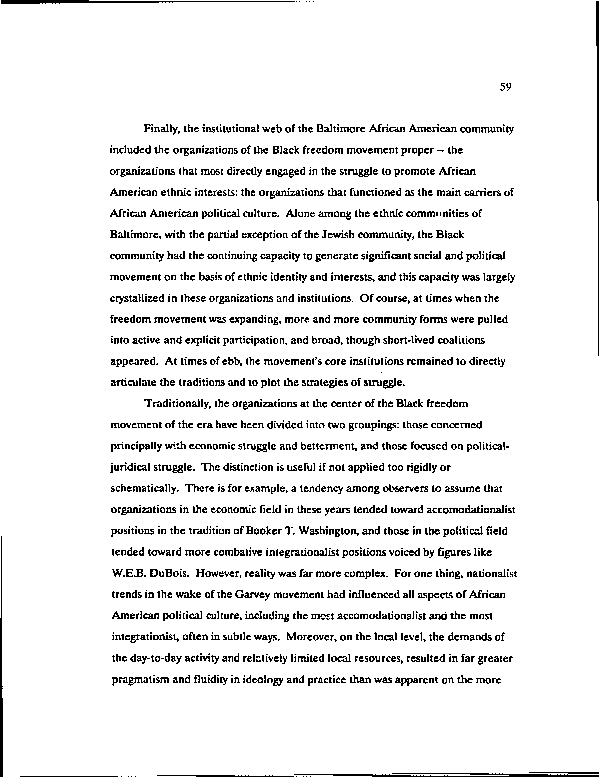|
59
Finally, the institutional web of the Baltimore African American community
included the organizations of the Black freedom movement proper — the
organizations that most directly engaged in the struggle to promote African
American ethnic interests: the organizations that functioned as the main carriers of
African American political culture. Alone among the ethnic communities of
Baltimore, with the partial exception of the Jewish community, the Black
community had the continuing capacity to generate significant social and political
movement on the basis of ethnic identity and interests, and this capacity was largely
crystallized in these organizations and institutions. Of course, at times when the
freedom movement was expanding, more and more community forms were pulled
into active and explicit participation, and broad, though short-lived coalitions
appeared. At times of ebb, the movement's core institutions remained to directly
articulate the traditions and to plot the strategies of struggle.
Traditionally, the organizations at the center of the Black freedom
movement of the era have been divided into two groupings: those concerned
principally with economic struggle and betterment, and those focused on political-
juridical struggle. The distinction is useful if not applied too rigidly or
schematically. There is for example, a tendency among observers to assume that
organizations in the economic field in these years tended toward accomodationalist
positions in the tradition of Booker T. Washington, and those in the political field
tended toward more combative integrationalist positions voiced by figures like
W.E.B. DuBois. However, reality was far more complex. For one thing, nationalist
trends in the wake of the Garvey movement had influenced all aspects of African
American political culture, including the most accomodationalist and the most
integrationist, often in subtle ways. Moreover, on the local level, the demands of
the day-to-day activity and relatively limited local resources, resulted in far greater
pragmatism and fluidity in ideology and practice than was apparent on the more
|

